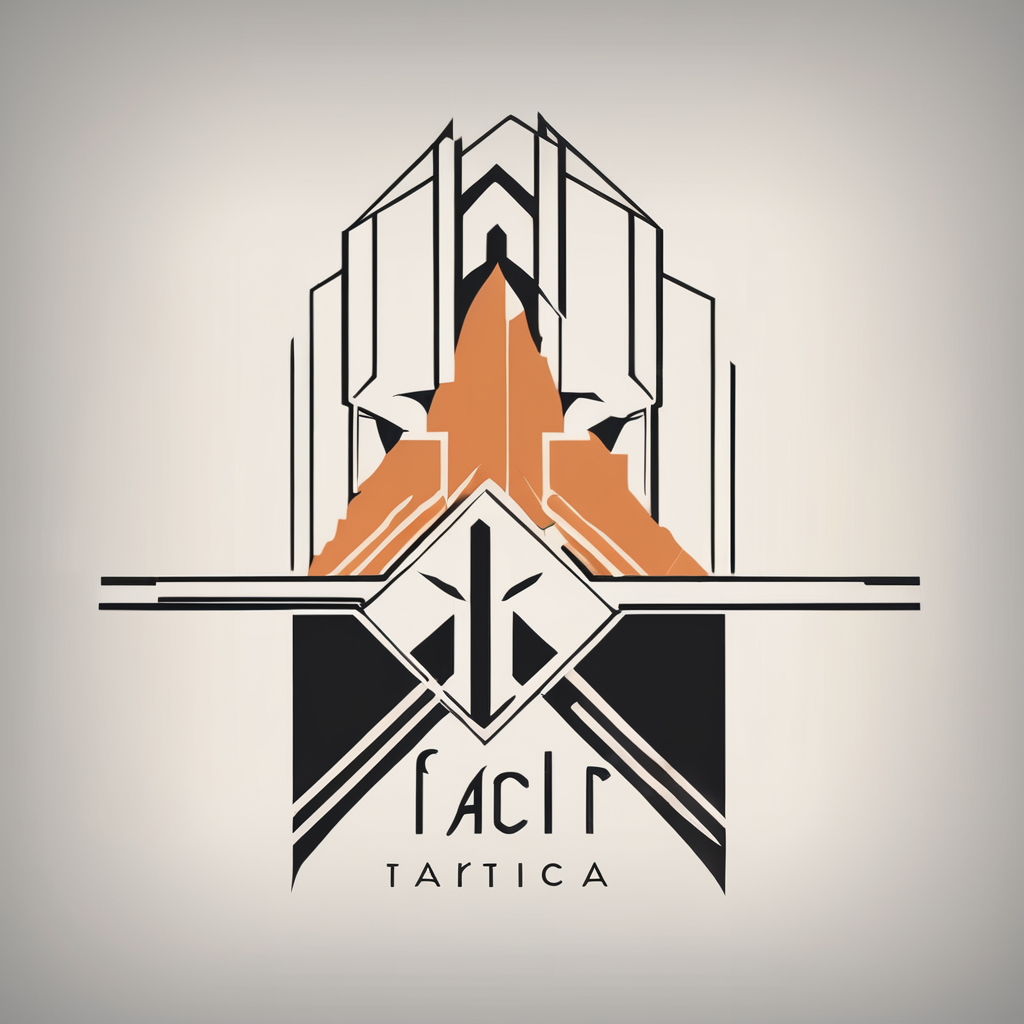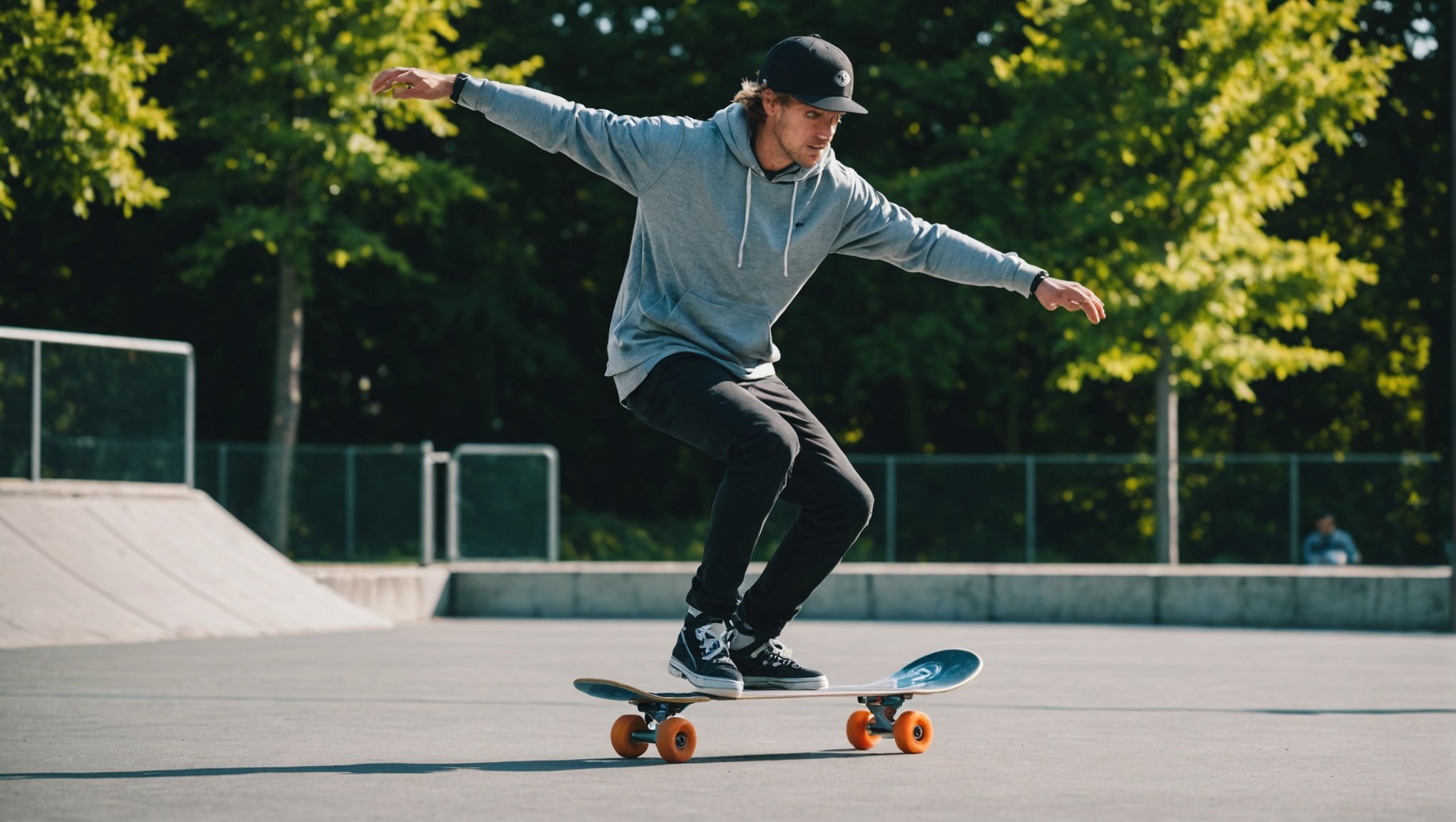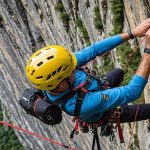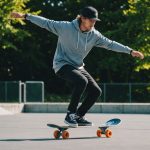Mastering Balance: Essential Tips for Professional Skateboarders to Enhance Their Skills for Advanced Tricks
Understanding the Importance of Balance in Skateboarding
Balance is the cornerstone of skateboarding, whether you’re a beginner or a seasoned pro. It’s what separates the casual skater from the professional, and it’s what makes the difference between landing a trick and ending up in a heap on the ground. For professional skateboarders, mastering balance is not just about staying on the board; it’s about executing advanced tricks with precision and style.
“Balance is key to everything in skateboarding,” says Tony Hawk, a legendary skateboarder. “Without it, you can’t even think about trying the more complex tricks.”
Topic to read : Unlocking Skateboarding Mastery: The Power of Visualization in Perfecting Tricks
To improve your balance, you need to focus on several key aspects:
- Foot Placement: Where you place your feet on the board can significantly affect your balance. For most tricks, you’ll want your dominant foot at the tail of the board and your other foot near the front bolts. This setup allows for better control and stability[1].
- Weight Centered: Keeping your weight centered over the board is crucial. This means keeping your knees bent and your weight evenly distributed between both feet. This stance helps you maintain balance and react quickly to any shifts in the board’s position.
- Knee Pads and Safety Gear: While safety gear might not seem directly related to balance, it’s essential for building confidence. Knowing you’re protected allows you to focus more on your technique rather than worrying about getting hurt.
Learning to Control Your Board
Controlling your board is an extension of maintaining balance. Here are some tips to help you improve your control:
Topic to read : Essential Tips for Long-Distance Runners to Avoid Muscle Cramps During Races
Mastering the Ollie
The ollie is a fundamental trick in skateboarding that involves popping the board off the ground without using your hands. It’s a great trick to practice for improving balance and control.
- Snap the Tail: To ollie, you need to snap the tail of the board downwards. This action creates the pop that lifts the board off the ground.
- Catch the Board: As the board rises, bring your front foot up to meet it, keeping your knees bent to absorb the impact.
- Practice, Practice, Practice: The ollie is a trick that requires a lot of practice to get right. Start on flat ground and gradually move to more challenging surfaces.
Speed Control
Speed can be both a friend and an enemy when it comes to skateboarding. Here’s how to manage it:
- Adjust Your Foot Placement: Depending on your speed, you may need to adjust your foot placement. At higher speeds, you might want to move your front foot slightly back to maintain stability.
- Use Your Edges: The edges of your board can help you control speed. By applying pressure to the edges, you can slow down or speed up.
- Look Where You Want to Go: Keeping your eyes on the path ahead helps you stay focused and maintain control.
Advanced Tricks and Balance Control
Once you’ve mastered the basics, it’s time to move on to more advanced tricks. Here are some tips for tricks that require exceptional balance control:
No Comply Trick
The No Comply is a trick that involves snapping the tail of the board while your foot is still on it, causing the board to flip and rotate.
- Step Off and Snap: Step off the board with one foot while snapping the tail downwards with the other. This action creates the rotation.
- Guide the Board: As the board rotates, use your stepping foot to guide it back under you.
- Lean and Adjust: Lean forward slightly to help the board come back to your feet, and adjust your position as needed to catch it[1].
Flip Tricks
Flip tricks, like the kickflip or heelflip, require precise balance control.
- Flick the Board: Flick the board with your foot to make it flip. The direction and force of the flick will determine the type of flip.
- Catch with Confidence: Catch the board with your trucks facing forward. Practice catching the board in different positions to improve your balance and reaction time.
Practical Insights and Actionable Advice
Here are some practical tips and advice to help you on your skateboarding journey:
Build a Routine
- Warm-Up: Always start with a warm-up session to get your muscles ready and your balance sharp.
- Practice Regularly: Consistency is key. Practice regularly, even if it’s just for a few minutes each day.
- Focus on One Trick at a Time: Mastering one trick at a time will help you build confidence and improve your overall skills.
Use Visual Aids
- Watch Videos: Watching videos of professional skateboarders can help you understand the mechanics of tricks and improve your technique.
- Mirror Work: Practice in front of a mirror to see how your body position and foot placement affect your balance.
Stay Safe
- Wear Protective Gear: Always wear knee pads, elbow pads, and a helmet. Safety gear can save you from serious injuries and allow you to focus on your skills.
- Skate Within Your Limits: Don’t try tricks that are beyond your skill level. Gradually increase the difficulty as you improve.
Table: Essential Gear for Skateboarding
| Gear | Description | Importance |
|---|---|---|
| Skateboard | A sturdy, well-maintained skateboard with the right trucks and wheels. | Essential for stability and control. |
| Knee Pads | Pads that protect your knees from impact. | Crucial for safety and confidence. |
| Elbow Pads | Pads that protect your elbows from impact. | Important for safety. |
| Helmet | A helmet that fits properly to protect your head. | Vital for safety. |
| Safety Gloves | Gloves that provide grip and protection for your hands. | Helpful for grip and protection. |
| Inline Skate (for practice) | An inline skate can help improve balance and foot placement skills. | Useful for cross-training. |
Detailed Bullet Point List: Tips for Improving Balance
-
Keep Your Weight Centered:
-
Ensure your weight is evenly distributed between both feet.
-
Keep your knees bent to lower your center of gravity.
-
Adjust your foot placement based on the trick you’re attempting.
-
Practice on Different Surfaces:
-
Start on flat ground and gradually move to ramps, bowls, or rough surfaces.
-
Each surface requires different balance adjustments.
-
Focus on Your Core Strength:
-
A strong core helps in maintaining balance and stability.
-
Incorporate core exercises into your workout routine.
-
Use Your Arms for Balance:
-
Keep your arms out for balance, especially when learning new tricks.
-
Use your arms to adjust your position and maintain stability.
-
Stay Relaxed:
-
Tension can throw off your balance. Stay relaxed and focused.
-
Practice deep breathing to stay calm under pressure.
Quotes from Professionals
- “The key to mastering any trick is to start slow and build up your speed and confidence. Don’t be afraid to fall; it’s part of the learning process,” says Steve Caballero, a veteran skateboarder.
- “Balance is something you develop over time with practice. It’s not just about standing on the board; it’s about feeling the board and understanding how it responds to your movements,” adds Rodney Mullen, known as the “Godfather of Street Skating.”
Mastering balance in skateboarding is a journey that requires patience, practice, and dedication. By focusing on foot placement, weight distribution, and control, you can significantly improve your skills and move on to more advanced tricks. Remember to stay safe, practice regularly, and use visual aids to enhance your learning.
In the words of Tony Hawk, “Skateboarding is a sport that teaches you to fall and get back up. It’s about perseverance and the joy of the ride.” So, keep skating, keep practicing, and most importantly, keep having fun.











